
On 12th November 1993, the Ultimate Fighting Championship debuted, pitting fighting styles from around the world against each other in a bid to determine the most effective fighting style.
From there, the UFC exploded in popularity and the Octagon hosted exciting battles between an array of diverse, dynamic and highly skilled personalities.
This countdown looks at the seven best performers from the first five years of the UFC's existence.
Get the latest updates on One Championship Rankings at Sportskeeda and more
Please note fighter records encompass UFC results only, in the period between the 12th November 1993 and the 21st December 1998.
#7 Tank Abbott (8-7)
In July 1995, a man by the name of David “Tank” Abbott exploded onto the scene at UFC 6, destroying John Matua in the First Round by knockout in just 18 seconds. So ferocious was the beating Abbott inflicted on him, Matua suffered convulsions post-match. Abbott next defeated the giant, Paul Varelans, taking the big man down with ground and pound.
However, Abbott’s limitations as a fighter would be exposed in the UFC tournament final versus Oleg Taktarov. Beyond his dazzling striking skills, Abbott lacked the inclination to grapple and wrestle. Furthermore, he lacked the aptitude to defend takedowns and a wrestler’s guard. Abbott was submitted by Taktarov after 17 minutes of gruelling action.
Abbott’s stock grew when he defeated UFC 4 tournament winner Steve Jennum and took UFC 5 tournament winner, Dan Severn to a decision at the Ultimate Ultimate1995 event.
“Tank” reached the final of the Ultimate Ultimate 1996 event, which once again illustrated the story of his career as he devastated Cal Worsham and Steve Nelmark with punches before he succumbed to the superior wrestling skills of Don Frye in the final. Abbott was unfortunate, as he very nearly KO’d Frye early in the fight before he gave Frye too much room during a flurry of punches, allowing him to skillfully slide across Abbott’s back and lock in a rear naked choke for the win.
As more skilled fighters began entering the Octagon, Abbott’s fortunes diminished. He lost his next two bouts as well before rounding out 1997 with an underwhelming decision victory over the unheralded Yoji Anjo, who won none of his six career fights.
Abbot returned to action on 15th May 1998, defeating no-name, Hugo Duarte before succumbing to the more accomplished Pedro Rizzo at UFC Brazil in October. His loss to Rizzo was Abbott’s final MMA fight for five years.
Dominating opponents with his dynamic brawling, Abbott was one of the most popular performers of the era. Despite his limitations, “Tank” was pure box office.
#6 Oleg Taktarov (6-1-2)
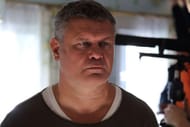
All of “The Russian Bear’s” UFC appearances came in 1995. Despite only wrestling a handful of events for the UFC, Oleg Taktarov captured the imagination of the MMA audience.
Taktarov first caught the attention at UFC 5, reaching the semi-finals, before falling to the eventual winner, Dan Severn by technical knockout.
Taktarov was invited back at the next UFC offering and won the UFC tournament at UFC 6. Taktarov used his considerable Ju-Jitsu skills to defeat both UFC 5 finalist Dave Beneteua and Anthony Macias by guillotine choke. Taktarov fought Tank Abbott in the Final, wearing down his stronger and larger opponent, using his far superior conditioning to secure the tournament victory by submission.
As UFC 6 Champion, Taktarov earned an opportunity to challenge Superfight Champion, Ken Shamrock at UFC 7. Taktarov battled to an uninspiring draw with Shamrock, which lasted an epic 33 minutes.
Taktarov next competed in the Ultimate Ultimate 1995 tournament in December. Taktarov progressed to the final but Lost to Severn once again. This would prove to be his final match in the promotion. He would never return.
#5 Mark Coleman (6-2)
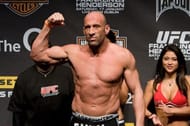
Mark Coleman entered the Octagon for the first time at UFC 10 on 12th July 1996.
He competed in the UFC 10 tournament and defeated Moti Horenstein, Gary Goodridge and Don Frye to win the tournament.
Coleman became the first man since Royce Gracie at UFC’s 1 and 2, to win back to back UFC tournaments when he repeated the feat at UFC 11. This time he defeated Julian Sanchez and Brian Johnstone. Coleman controversially won the final by default as no competitor from the other side of the draw was fit enough to compete in another match.
Nevertheless, that was an issue out of Coleman’s control and his incredible winning streak continued at UFC 12, when he impressively submitted UFC Superfight Champion Dan Severn with a neck crank, to become the inaugural UFC Heavyweight Champion.
Coleman lost the title in his first defence which ended a run of six straight Octagon victories after he was bested by Maurice Smith.
Coleman next returned at UFC 17: Redemption, an event which referenced his return, after his upset loss. The initial plan was for Coleman to challenge new UFC Heavyweight Champion, Randy Couture, however, Couture could not get medical clearance to compete, so Coleman fought debutant, Pete Williams instead. In a colossal shock, Coleman fell victim to the famous “kick heard around the world” and lost by knockout after his head was almost removed from his shoulders by William’s incredible head kick.
Coleman would leave the UFC in 1999 and rebuild his career in the Japanese promotion, Pride FC.
#4 Dan Severn (9-3)
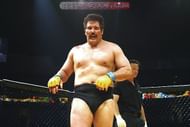
“The Beast” Dan Severn debuted at UFC 4, dominating the competition until he met two-time tournament winner Royce Gracie in the final. Gracie outdid Severn with a triangle choke.
Severn returned at UFC 5, an event which was subtitled “Return of the Beast” after him.
This time Severn went one better, defeating Joe Charles, Oleg Taktarov and finally Dave Beneteau in the final to win the tournament.
Severn was then granted a crack at the inaugural Superfight Championship versus Ken Shamrock at UFC 6. Severn made a critical error when he ducked his head too low whilst pressing Shamrock against the fence, allowing Shamrock to submit him with a choke.
Bouncing back, Severn entered the Ultimate Ultimate 1995 tournament in December, impressively defeating a difficult field of Paul Varelans, Tank Abbott and Taktarov to win his second tournament of 1995.
From there, Severn was given a rematch with Shamrock at UFC 9 and defeated him by split decision to win the Superfight Championship.
It was a title Severn would lose in his first defence as the belt was unified with the brand new UFC Heavyweight Championship at UFC 12. Mark Coleman overcame Severn to become the first UFC Heavyweight Champion.
Severn’s title loss marked his final appearance in the promotion until the year 2000.
#3 Don Frye (10-1)
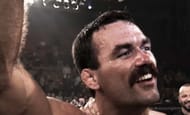
Don Frye debuted at UFC 8, competing in the UFC tournament. Fighting three times in one night, Frye incredibly spent only a combined 3 minutes 10 seconds in the Octagon across those matches.
Frye first destroyed Thomas Ramirez with punches in a then-record winning time of just eight seconds, before he also decimated Sam Adkins and Gary Goodridge to win the tournament.
Such was Frye’s dynamism, he became instantly popular with UFC crowds and was invited back at UFC 9 where he defeated Amaury Bitetti in a non-tournament encounter.
At UFC 10, Frye re-entered the tournament arena and reached the final where he lost to Mark Coleman. That was Frye’s first MMA loss.
Frye went one better later that year when he competed in the Ultimate Ultimate 1995 tournament in December, winning in the final in an exciting battle with heavy hitter, Tank Abbott.
Frye left the UFC following his win, departing the company with an incredible 10-1 record.
#2 Royce Gracie (11-1-0)
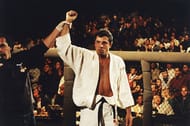
Royce Gracie began his UFC career at the inaugural UFC event on the 12th November 1993. He defeated Art Jimmerson, Ken Shamrock and Gerard Gourdeau en route to victory, with his Brazilian Ju-Jitsu bamboozling the field of larger, stronger opponents.
Gracie repeated the feat at UFC 2, successfully winning the tournament once more.
Gracie’s dominance was halted at UFC 3, when after overcoming Kimo Leopoldo in a gruelling encounter, he could not continue further and was forced to withdraw from his semi-final match with Harold Howard.
With a point to prove, Gracie re-entered the UFC tournament at UFC 4 as the Brazilian clocked up 11 consecutive victories in the promotion, becoming the first and only three-time UFC tournament winner.
At UFC 5, Gracie finally had his much-anticipated rematch with Shamrock. Although the contest was officially ruled a draw after 36 minutes of action, due to the lack of judges at the time, Gracie’s face told the story about who really won that fight.
Shamrock’s superior strength and striking skills had finally overcome the near impenetrable guard and Jiu-Jitsu skills of Gracie.
That was Gracie’s final MMA fight for five years, until he resurfaced in Pride FC in 2000.
#1 Ken Shamrock (6-2-2)

The “World’s Most Dangerous Man” competed at the first UFC event in November 1993. He comfortably defeated Pat Smith via submission with a heel hook, before he was submitted by eventual winner, Royce Gracie in the semi-finals.
Believing he had taken Gracie too lightly, Shamrock was eager to atone for his loss and fight Gracie once again.
At UFC 3, Shamrock was pitted on the opposite side of the draw to Gracie and the pre-event hype focussed on the expected re-match by the pair in the UFC Final.
It wasn’t to be, however. Gracie withdrew from his semi-final match due to exhaustion following his gruelling encounter with Kimo in the previous round. Shamrock who had already reached the final then also withdrew from the competition, citing an arm injury. In truth, Shamrock had no interest in fighting anyone else until he got another shot at Gracie.
Shamrock’s wish was granted when the UFC created the Superfight Championship in addition to the traditional tournament. Shamrock and Gracie would fight to become the inaugural champion.
In the longest fight in UFC history, Shamrock ground and pound Gracie at will. However, the durable Brazilian would not give up and when there was no result after 36 minutes, the fight was declared a draw. However, if judges had existed in the UFC at that point there is no question Shamrock would have been the unanimous victor.
Recognising that fact, the UFC invited Shamrock to fight for the Superfight belt again at UFC 6; this time against UFC 5 tournament winner, Dan “The Beast” Severn. In a surprisingly short match, Shamrock caught the larger Severn in a choke, submitting him for the victory. Shamrock was the first ever Superfight Champion.
At UFC 7 Shamrock defended the belt against UFC 6 tournament winner, Oleg Taktarov. Similarly to the Gracie fight, Shamrock completely dominated his opponent but could not finish him off. Shamrock felt hampered by the fact Taktarov was his friend and training partner whom he was trying to secure a spot for with the Pancrase promotion and didn’t want to jeopardise future plans by injuring him. So, in scenes reminiscent of UFC 5, the epic 33-minute match was declared a draw. Once again, had judges existed in UFC at the time, Shamrock would have been the winner, unequivocally.
Shamrock was next pitted against Kimo, the man who had dominated Gracie at UFC 3, in his title defence at UFC 8. Shamrock outwrestled the Hawaiian and submitted him with an ankle lock.
At UFC 9, Shamrock was booked in a much-anticipated re-match with Severn, however, the match was a colossal disappointment. Hampered by the fact the District Attorney of Michigan, where the event was held, did not want the event to go ahead in the state, UFC officials were forced to acquiesce to rule changes; namely the fact that the fighters could not utilise closed fists to the head or head-butts.
The two fighters, therefore, were barely able to do anything. Neither Shamrock nor Severn could force a victory in this environment after 30 minutes.
This time, however, there were judges. Shamrock lost a close split decision and with it his Superfight Championship. Dismayed by the fact political pressure was restricting markets in which the UFC could host events, Shamrock decided to step away from the sport he loved so much.
Shamrock made one last appearance in his initial run with UFC at Ultimate Ultimate 1996 on the 7th December that year. Shamrock competed once again in the tournament format and was heavily favoured to win. However, after he defeated Brian Johnstone in the first round, Shamrock was forced to withdraw from the competition after he suffered an injured hand during the fight.
Using his name value and moniker as the “World’s Most Dangerous Man”, Shamrock secured a deal to join the World Wrestling Federation as a pro-wrestler where he would remain until the Autumn of 1999, before signing a contract with Pride FC in 2000. Shamrock would continue to coach his Lion’s Den fighters for UFC competition but would not return to the Octagon himself until November 2002.
However, Shamrock’s legacy as the UFC’s greatest drawing card and fighter of the early years of the UFC was already assured.
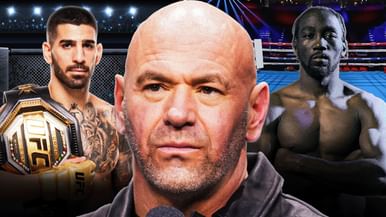
MMA vs. Boxing: The Ultimate Showdown!
